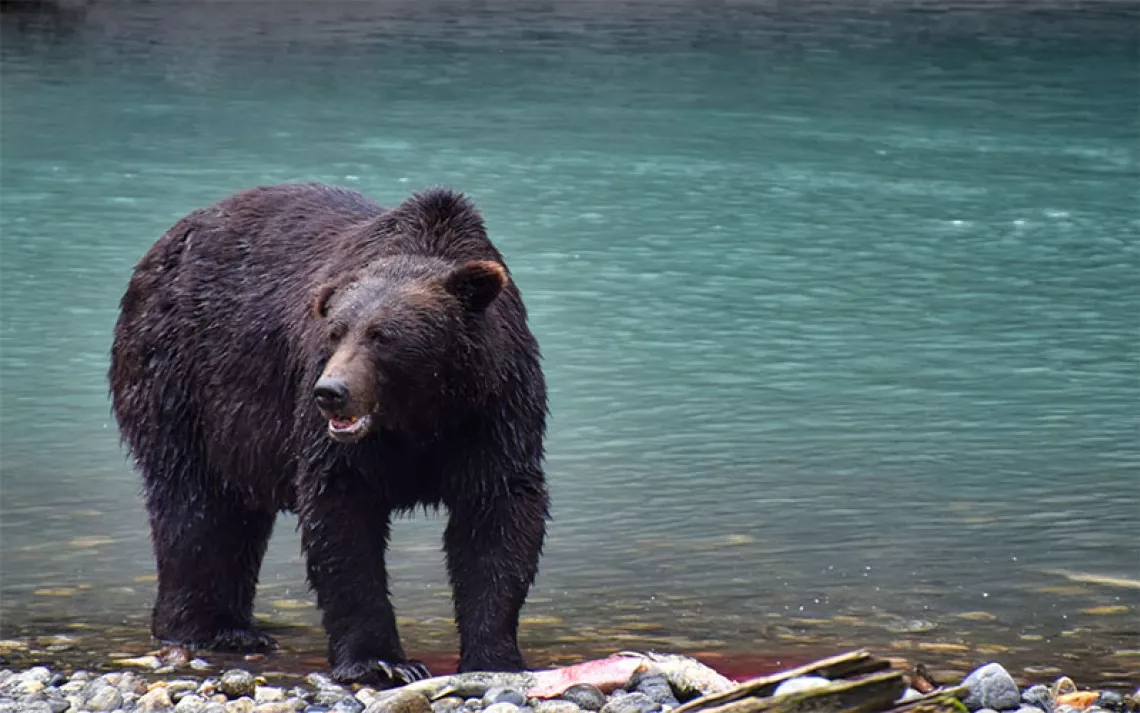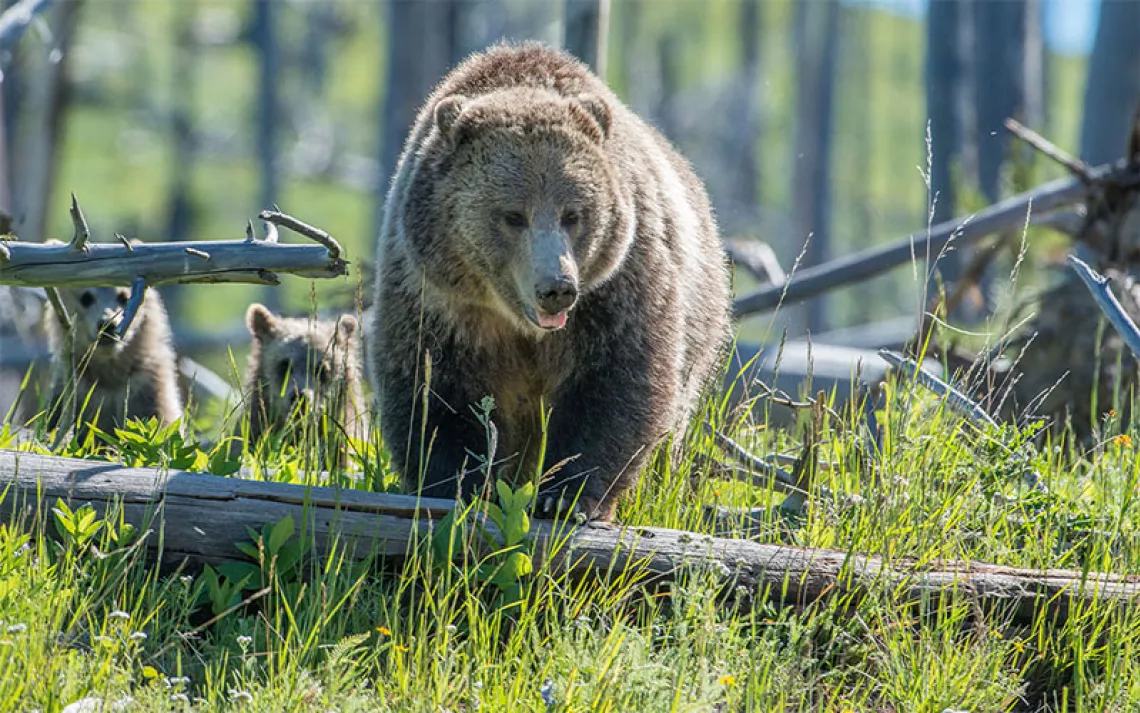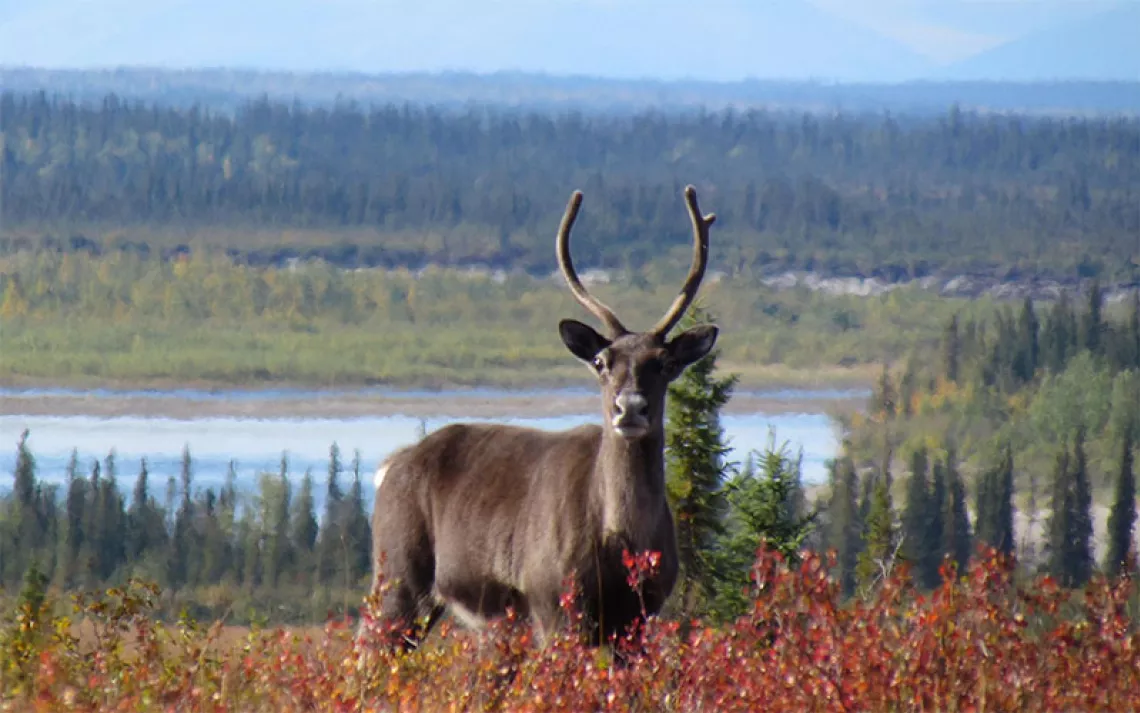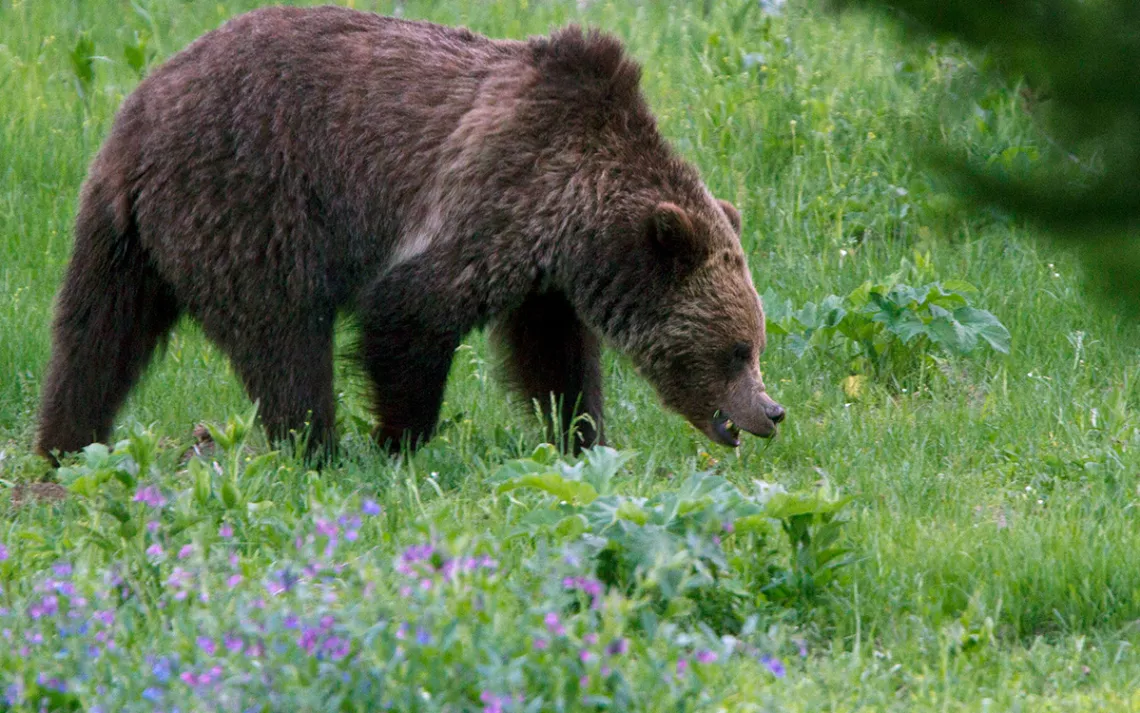Left Coast Griz
The grizzly bear is poised to return to the West
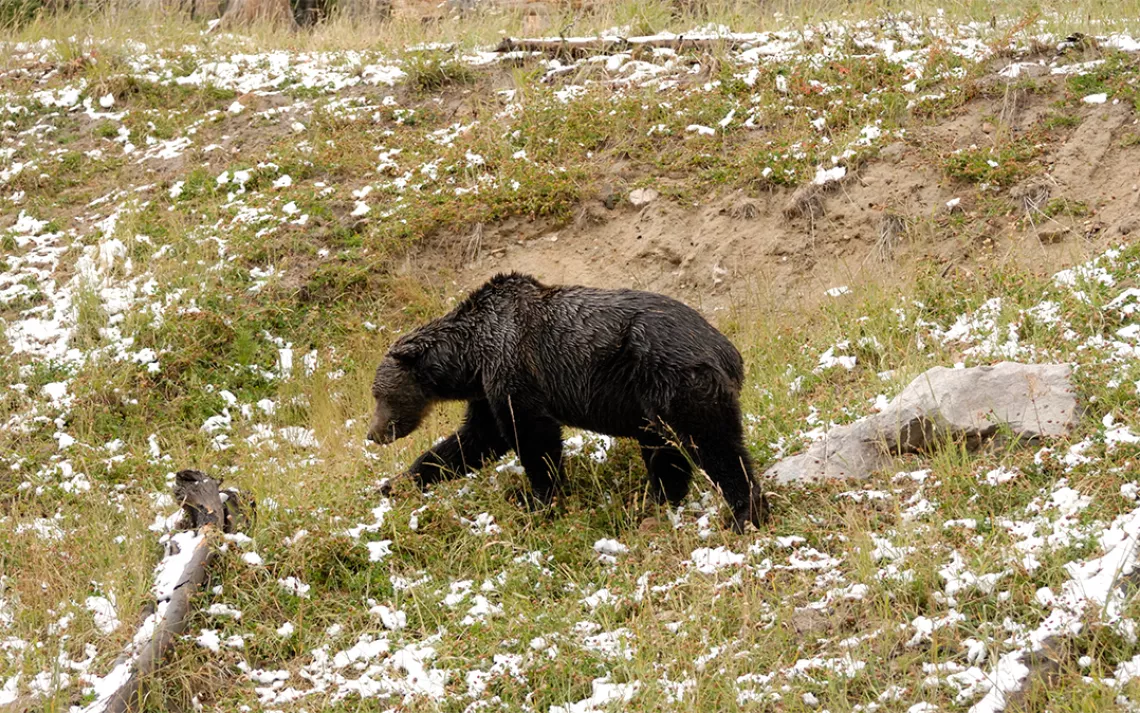
Photos by Jim Yuskavitch
It’s been nearly 50 years since one of the last grizzly bears in Washington State’s wild North Cascades was shot and killed. It's been even longer, more than 90 years, since the last known grizzly vanished from California, where the great bear’s image is still emblazoned prominently on the state flag. But they may be poised for a comeback. There are plans in the works to reintroduce grizzlies into the North Cascades ecosystem, initiated by the federal government in the early 1990s. Also, conservationists have proposed doing the same in the remote regions of the southern Sierra Nevada, which could also open the door for grizzly reintroductions into other parts of their historical range beyond their current Northern Rockies stronghold.
Grizzly bear populations began dropping in the West in the mid-1850s, mostly from hunting. By 1920, they were gone from 95 percent of their historical range. In 1975, grizzlies occupied only about 2 percent of their former range and just 1 percent of their historical population. They were listed that year as threatened in the lower 48 states under the federal Endangered Species Act. Five years later, the state of Washington listed the bear as endangered under its state ESA, where a very small population was thought to remain in the North Cascades along the British Columbia border. Grizzlies were deemed extinct in California by 1924.
Once the bears were ESA-listed, the U.S. Fish and Wildlife Service wrote a grizzly bear recovery plan, which it completed in 1982. After evaluating the North Cascades ecosystem habitat in the early 1990s, the agency concluded that it qualified as a grizzly bear recovery zone. The habitat is now one of five official grizzly bear recovery zones that also includes the Selkirk Cabinet-Yaak, Northern Continental Divide, Bitterroot, and Yellowstone ecosystems. The current estimated grizzly bear population in the Lower 48 is about 1,500.
The U.S. portion of the North Cascades ecosystem covers a 9,800-square-mile swath of the Cascade Mountains in Washington State from the Canadian border south to Interstate 90. Ninety-seven percent of that area is in public ownership—primarily North Cascades National Park and the Okanogan-Wenatchee and Mount Baker-Snoqualmie National Forests—and is mostly remote and roadless. The British Columbia portion, for which a grizzly bear recovery plan was produced in 2004, is about 3,800 square miles.
Bill Gaines is a wildlife ecologist with the Washington Conservation Science Institute, previously a wildlife biologist for the Okanogan-Wenatchee National Forest, and the former scientific advisor to the federal government’s North Cascades Ecosystem grizzly bear recovery subcommittee. He has done extensive grizzly bear survey work in the North Cascades. During the early 1990s, researchers looked at potential habitat and food sources for grizzlies and found more than adequate resources of both, including 120 different plants that the bears could eat along with salmon runs and other potential food items. “We have really rich habitat, because we have a wet west side, a dry east side, and a transition zone in between,” says Gaines. “There are food resources for a population of 250 to 300 bears.”
The last verified grizzly bear sighting in the North Cascades was in 1996, in the Glacier Peak Wilderness. But in 2010, a photographer produced a picture of a bear he recorded in the North Cascades silhouetted against the sky, a large hump that is characteristic of grizzly bears prominently visible. A majority of experts identified the bear in the photo as a grizzly, sending excitement throughout the bear research and advocacy community, only to have another photographer come forward with a photo he had shot in the same area of a bear, also with a prominent hump, that was clearly a black bear, casting doubt on the previous picture.
A methodical search for North Cascades grizzly bears was launched to verify their current status. Between 2010 and 2012, Gaines and other researchers with the Cascades Carnivore Connectivity Project put out remote cameras and about 150 hair-collection stations to try to get photographs and snag hair samples of grizzlies that could then be confirmed through DNA testing. But all of the 750 bear hair samples they collected were from black bears, and the remote cameras failed to detect any grizzlies. Nevertheless, based on occasional reported sightings, researchers are confident that some still roam the remote region, although they put the total population on both sides of the border at less than 20—few enough that they are at high risk of extinction unless more bears are eventually brought in to augment their numbers.
In 2014, the U.S. Fish and Wildlife Service and the National Park Service began work on a North Cascades grizzly bear restoration environmental impact statement, took public comment on the document in 2015, and is now working on a draft recovery plan. Once that’s completed this winter, it will go out for additional public comment, and then a final recovery plan will be written. In fall 2017, the two agencies will decide whether to move forward with the restoration.
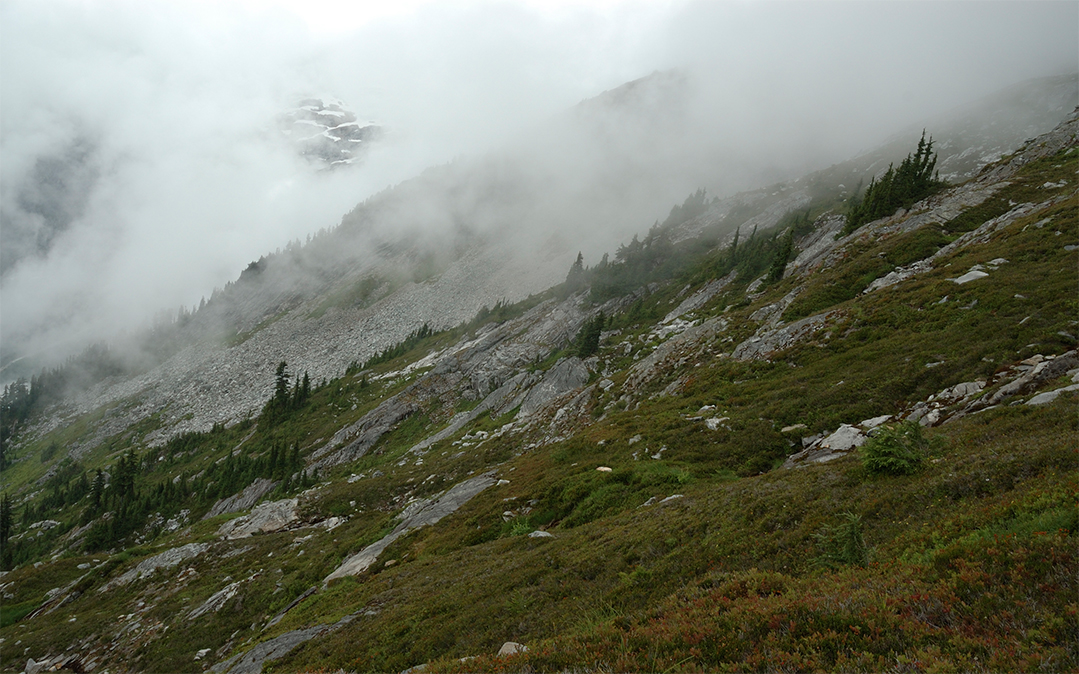 North Cascades National Park backcountry At the same time that public comments were being taken on the North Cascades grizzly EIS, the Tucson, Arizona–based Center for Biological Diversity petitioned the Fish and Wildlife Service to revise its original grizzly recovery plan to include more areas of the West where the bears once roamed but have been extirpated.
North Cascades National Park backcountry At the same time that public comments were being taken on the North Cascades grizzly EIS, the Tucson, Arizona–based Center for Biological Diversity petitioned the Fish and Wildlife Service to revise its original grizzly recovery plan to include more areas of the West where the bears once roamed but have been extirpated.
Although the agency denied the petition, the Center for Biological Diversity, which is considering a legal challenge, pushed forward with restoring grizzlies to more areas, starting with the southern Sierra Nevada. The California media picked up the story of reintroducing grizzlies back to the state, which captured the imagination of many residents. “It generated a lot of interest,” says Noah Greenwald, the center’s endangered species director, “partly because a bear is on the state flag and partly because California is a wildlife friendly state.” A California advertising agency, Gyro, even came forward and did some pro bono public relations print and video spots to help plug the proposal.
The idea for expanding the regions of the West where grizzlies might eventually be reintroduced came out of research by Carlos Carroll, a conservation biologist at the Klamath Center for Conservation Research in Orleans, California, who looked at what former ranges might still support bear populations. “The most important criteria was the presence of humans and roads, as there is more of a chance of conflicts with grizzlies,” says Carroll. “The southern Sierra Nevada is big enough to potentially have a sustainable grizzly bear population.” That portion of the range, roughly from Yosemite National Park to Sequoia National Park and including the parks, is about 7,700 square miles in size, although not all of it is equally suitable as grizzly habitat.
There are other places in the West, particularly in the Grand Canyon, Colorado’s San Juan Mountains, the Klamath-Siskiyou ecoregion in southern Oregon and northern California, and some areas in Nevada, Utah, and New Mexico that might also work for grizzlies. Carroll notes that one thing grizzlies have going for them for successful reintroductions to former habitats is their high adaptability for utilizing a variety of food sources.
Despite their legendary ferocity, grizzly bears have what wildlife biologists call “low resiliency,” meaning they are very sensitive to human activity, have low reproductive rates, and need large blocks of wild habitat, which will make establishing new populations challenging. Connectivity with other bear populations is especially problematic. Without it there is no genetic flow to keep populations healthy, or a natural source of new bears to replace bears that die. A grizzly population in the southern Sierra Nevada would be completely isolated and would need to be periodically, and probably indefinitely, supplemented with new bears. Even the North Cascades reintroduction would likely require a similar strategy until a self-sustaining population was attained, which the recovery plan estimates could take from 50 to 125 years. And, of course, a source of bears for the reintroductions and follow-up releases would have to be found from populations that can afford to give up some of their own animals.
There is also the people factor—human reactions to large carnivores are often irrational and uninformed. Although there is solid 80 percent support among Washington State residents for reintroducing grizzlies to the North Cascades, there are also concerns. Bear advocates are reaching out to hikers, climbers, and other outdoor enthusiasts on safety issues, and to quell unfounded fears that the return of the grizzly will also include closing large blocks of wildlands to recreational activities.
Peter Alagona, a professor of history, geology, and environmental studies at the University of California, Santa Barbara, has assembled the California Grizzly Study Group, comprised of a couple dozen experts in various fields who want to get out in front of the issues that are likely to arise with a grizzly reintroduction into the southern Sierra Nevada. “There are a whole range of issues—history, geography, ecology, attitudes, management, policy,” says Alagona. “It’s a fascinating case study, and we’ll be putting out information to help people understand the issues behind grizzly bear reintroduction.” The next step for California grizzly advocates, once there is enough public support, is to press the California Department of Fish and Wildlife to conduct a Sierra Nevada grizzly bear reintroduction feasibility study.
Both Gaines and Carroll emphasize the tremendous potential these reintroductions offer, even beyond bringing back grizzlies. Says Gaines, “In the North Cascades you have a core wild area where you have a chance to return a large carnivore like the grizzly bear. It’s really important to consider the rarity of the opportunity to do this.” In California, Carroll asserts, “The fact that the southern Sierra Nevada is wild enough for grizzly bears also demonstrates that it is a potential site for wolverines, fishers, and wolves, which have been wiped out from most of their range in California. It has the potential to be the Yellowstone of California.”
While the challenges to successfully reestablish sustainable grizzly bear populations on the West Coast and in other parts of the West will be formidable, there is still viable habitat outside of the Northern Rockies. With enough public support, along with pressure on wildlife management agencies, the return of the grizzly bear to at least some of those areas is within the realm of the possible.
Here are some links of interest:
Interagency Grizzly Bear Committee
North Cascades Recovery Ecosystem
 The Magazine of The Sierra Club
The Magazine of The Sierra Club
